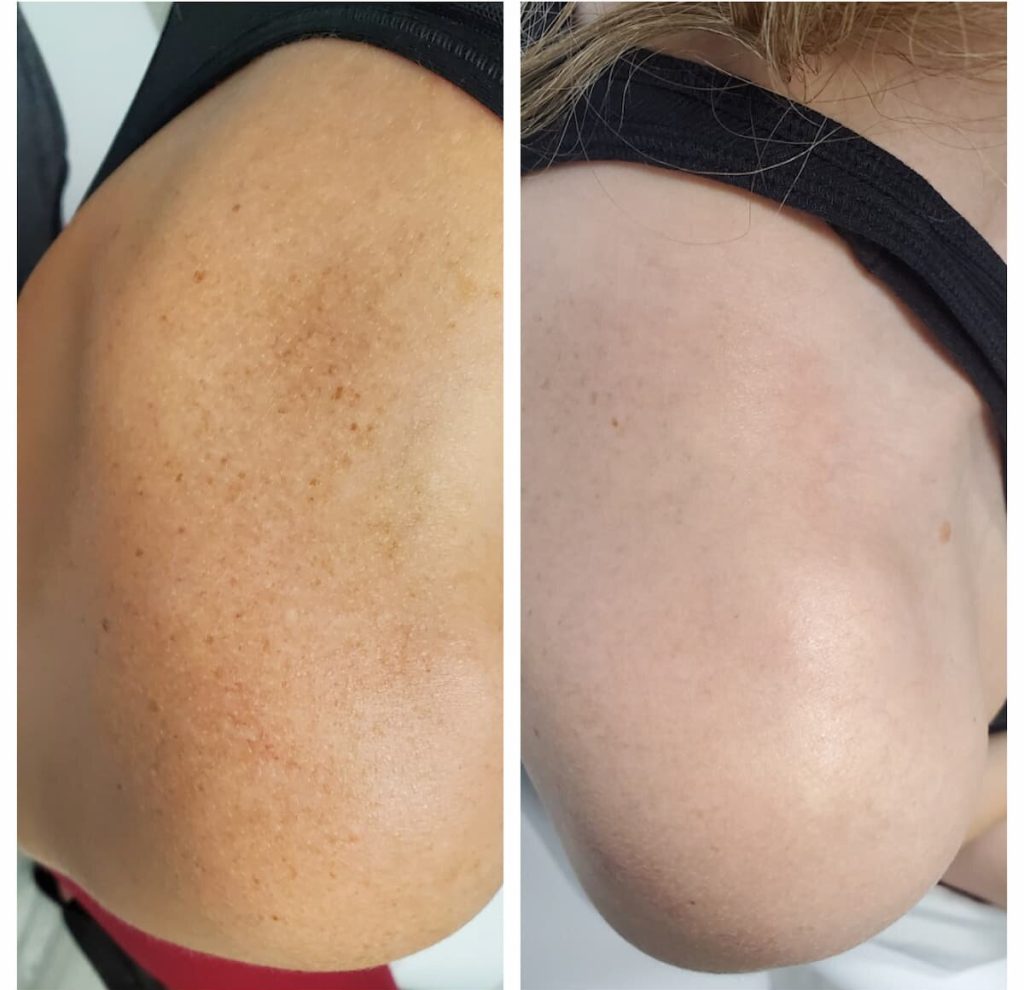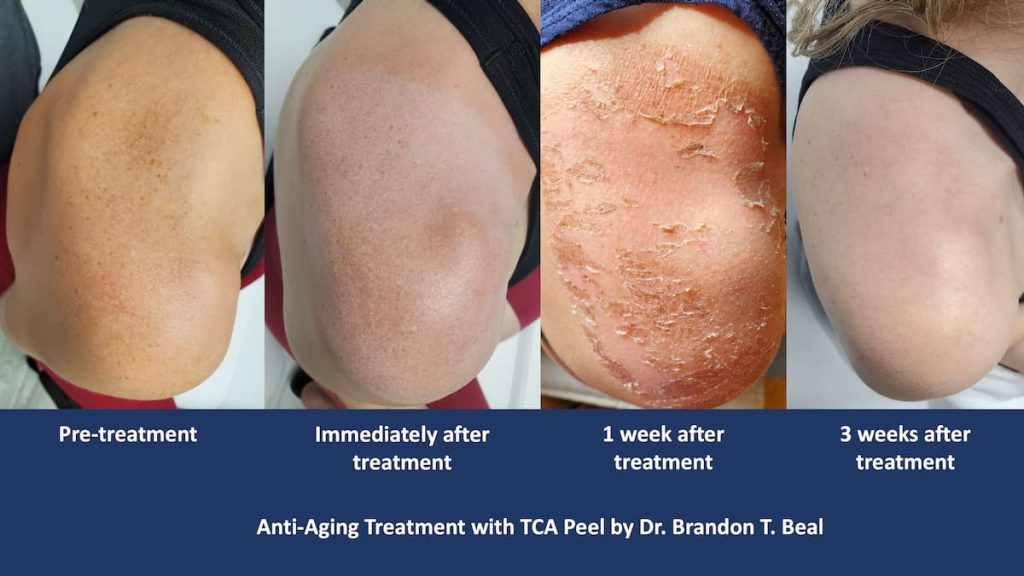Sun Spot Treatment
Sun spots, also known as solar lentigines, are flat, brown or tan patches that develop on areas of the skin frequently exposed to sunlight.

What are Sun Spots?
Sun spots, also known as solar lentigines, are flat, brown or tan patches that develop on areas of the skin frequently exposed to sunlight. They are caused by UV radiation stimulating excess melanin production over time. Sun spots are not harmful, but many patients choose to have them treated for cosmetic reasons or as part of a broader plan to improve overall skin tone and texture.
Causes and Risk Factors
Sun spots are the result of chronic sun exposure and accumulated UV damage. They are most commonly found on areas that receive the most sunlight, including:
- Face
- Neck
- Chest
- Shoulders
- Arms
- Hands
Risk factors include:
- Fair or light skin tone
- History of frequent sun exposure or tanning
- Older age
- Past sunburns
- Use of tanning beds
How Sun Spots are Diagnosed
Sun spots are typically diagnosed through clinical examination. They appear as flat, oval, brown or tan lesions with well-defined borders.
While most sun spots are benign, a dermatologist will assess any new, changing, or irregularly shaped pigmented lesions to rule out precancerous or cancerous conditions, such as actinic keratoses or melanoma.
Treatment Options
At St. Louis Dermatology & Cosmetic Surgery, sun spot treatment plans are customized based on skin type, the number and depth of lesions, and the patient’s overall skin condition.
We offer two primary treatment modalities — chemical peels and laser treatments — both designed to safely and effectively target pigmentation.
1. Chemical Peels for Sun Spots
Chemical peels use medical-grade exfoliating solutions to remove the outermost layers of the skin, encouraging cell turnover and regeneration of new, evenly pigmented tissue.
How It Works:
- A controlled chemical solution (such as glycolic acid, salicylic acid, or trichloroacetic acid) is applied to the skin.
- The solution gently dissolves damaged surface cells, allowing new, healthier skin to form.
- This process lightens the appearance of dark spots and promotes a smoother, more uniform tone.
Benefits:
- Reduces mild to moderate sun spots and discoloration
- Improves skin texture and radiance
- Minimal downtime, depending on peel depth
- Can be repeated in a series for enhanced results
Considerations:
- Mild redness, peeling, or sensitivity may occur for several days after treatment.
- Daily sunscreen use is required following a chemical peel to prevent new pigmentation.
- Not recommended for patients with active infections, open wounds, or certain skin sensitivities.

2. Laser Treatments for Sun Spots
Laser therapy provides a precise, targeted method for removing unwanted pigmentation with minimal disruption to surrounding skin.
How It Works:
- The laser emits specific wavelengths of light that are absorbed by melanin in sunspots.
- The pigment particles are broken down into smaller fragments.
- The body’s natural healing process gradually eliminates the treated pigment.
Types of Laser Treatments Offered:
- Intense Pulsed Light (IPL): Uses broad-spectrum light to target multiple sun spots and diffuse redness simultaneously.
- Fractional Laser Resurfacing: Penetrates deeper skin layers to treat more advanced pigmentation and improve overall texture.
Benefits:
- Effective for moderate to severe pigmentation
- Can treat multiple lesions in a single session
- Stimulates collagen production for additional rejuvenation benefits
- Minimal downtime with long-lasting results
Considerations:
- Temporary redness, swelling, or mild flaking may occur after treatment.
- Sun protection is mandatory before and after treatment to maintain results and prevent recurrence.
- A series of treatments may be recommended for optimal clearance.
Post-Treatment Care
Proper aftercare is essential to ensure adequate healing and prevent the reappearance of sun spots.
General Guidelines:
- Apply broad-spectrum sunscreen (SPF 30 or higher) daily.
- Avoid direct sunlight for several weeks after treatment.
- Use gentle, fragrance-free skincare products.
- Avoid exfoliation until skin has fully recovered.
- Follow any personalized instructions provided by your dermatologist.

Maintenance and Prevention
To maintain results and prevent future sun spots:
- Use daily sun protection, even on cloudy days.
- Wear protective clothing, wide-brimmed hats, and UV-blocking sunglasses outdoors.
- Avoid tanning beds or intentional sunbathing.
- Incorporate antioxidants and retinoids into your skincare regimen as advised by your provider.
Regular follow-up visits allow for monitoring of skin health and early detection of any new pigmentation changes.
Schedule a Consultation With St. Louis Dermatology & Cosmetic Surgery Today
If you are concerned about sun spots or other pigmentation changes, schedule an evaluation with our team. We will perform a detailed skin assessment and recommend a treatment plan tailored to your goals. Contact us today by filling out our contact form or calling (314) 834-1400.
GET IN TOUCH
